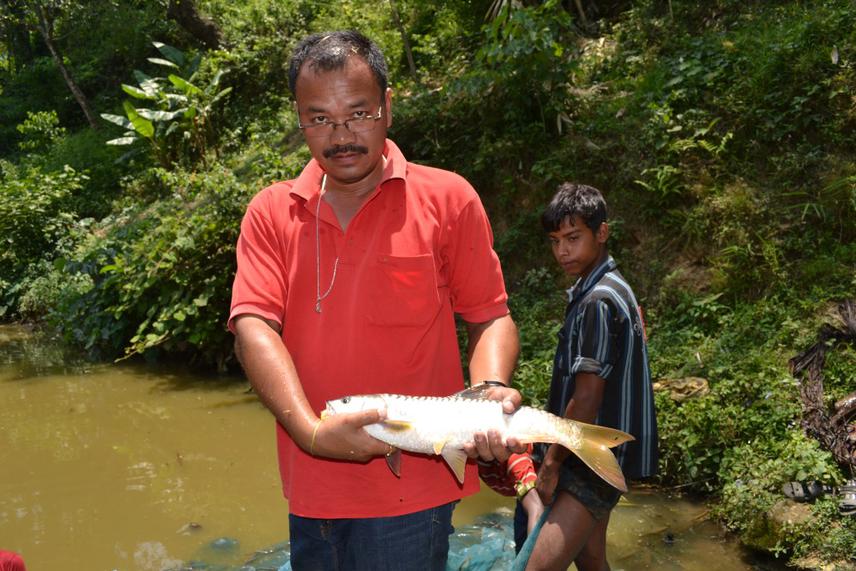Boni Amin Laskar
Other projects
10 Nov 2010
Habitat Inventory of Threatened Jungha Mahseer Fish for Conservation Area Appraisal in Northeast India
This project aims at generating baseline information on the life history traits including
threat identification, population assessment and distribution map of the recently revived
endemic and threatened species of mahseer- Neolissochilus hexastichus from Northeast India. In
collaboration with a local NGO the project aims to rear hexastichus mahseer in a lake for its
artificial propagation and ranching in future, and to expedite conservation of mahseer through
mass awareness.

N. hexagonolepis.
The broad objective of the project is conservation of a group of Himalayan fishes known as Mahseer. The group is known for cultural, ecological and economic importance in many Asian countries. Different species of Mahseer are considered as keystone in the hilly streams. This group is popular as game fish to the international as well as local anglers. In first RSG, as a start-up project, we have studied the habitats and distribution of Mahseer with emphasis on a particular species. We have surveyed the potential and safe water bodies for stocking of mahseer seeds. With that study, we have encountered a rare species of mahseer which has been identified as an endemic species- Neolissochilus hexastichus. Importantly, this species is surviving only in the Dima-Hasao district area of the state Assam. The water bodies in the region are also inhabited by two other mahseer species, viz., Tor putitora and Neolissochilus hexagonolepis. This hill district area is principally inhabited by the recognized scheduled tribe (Dimasa and Hmar) of India.
This 2nd RSG in collaboration with a local NGO named WAIMIJING aims to develop the brood stock of some mahseer species particularly the hexastichus mahseer in captivity in a lake. The PI of the project is already a trained and skilled person who will guide the trained members. In a long run, the success of controlled breeding of mahseer would result into recurrent restocking of seeds in the lake as well as nearby streams in order to replenish their population. Looking ahead, the present initiative may lead to the establishment of Mahseer Seed Bank and Research Center. The long run objective of the mahseer conservation project is to establish recreational mahseer fishing itineraries in northeast India. The recreational fishing is well regarded for its positive role in conserving Mahseer, because recreational fishers constitute a social group that offers unique potential to enhance fish conservation (Pinder and Raghavan 2013).
The project would emphasise to interact with the tribal people living in the vicinity of mahseer habitats to inform them about the socio-economic and ecological importance of mahseer. Mass awareness to different age group of people would be provided through this project. We invite the interested persons to provide input for better outcome of the project. The concerned persons are being requested to feel free to contact us to work as collaborator for mahseer conservation in NE India.